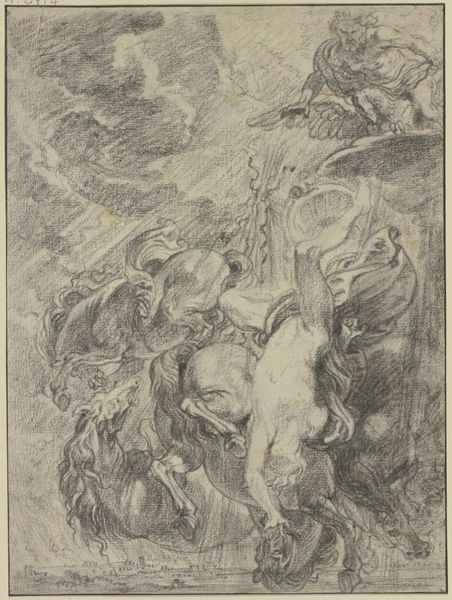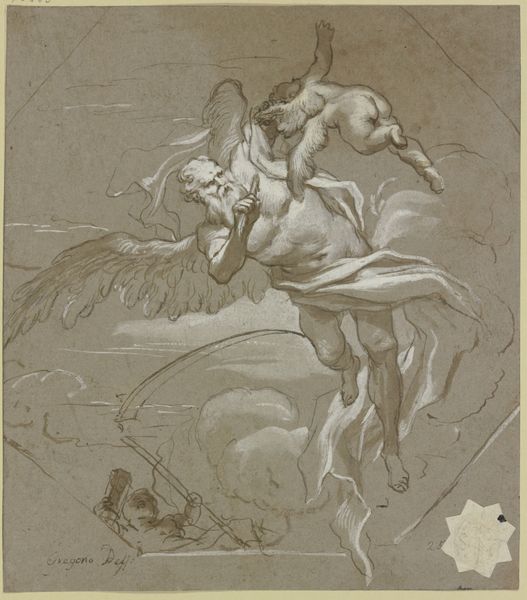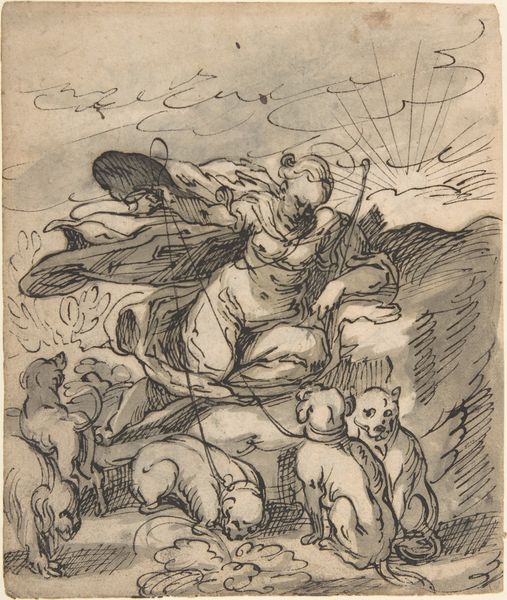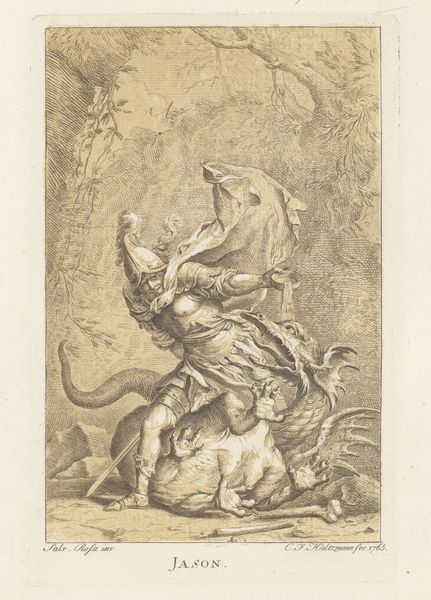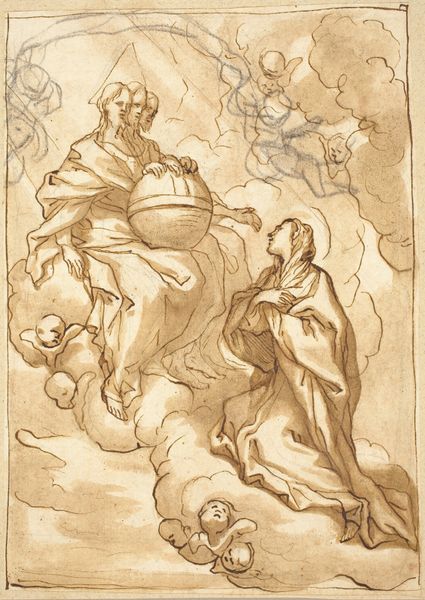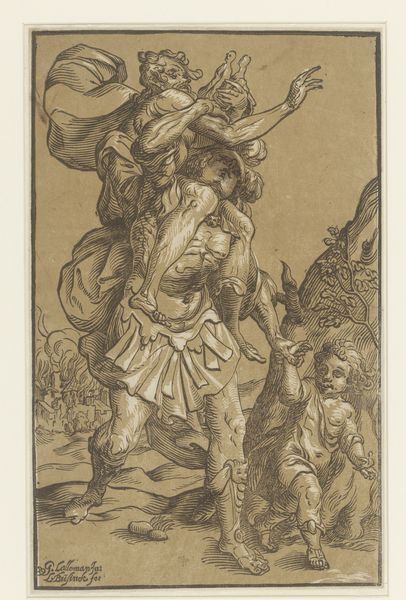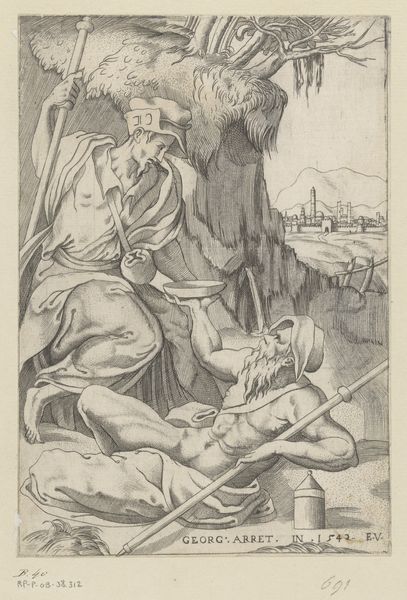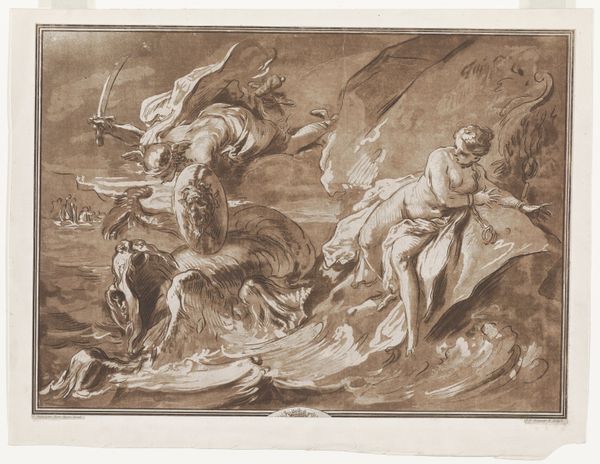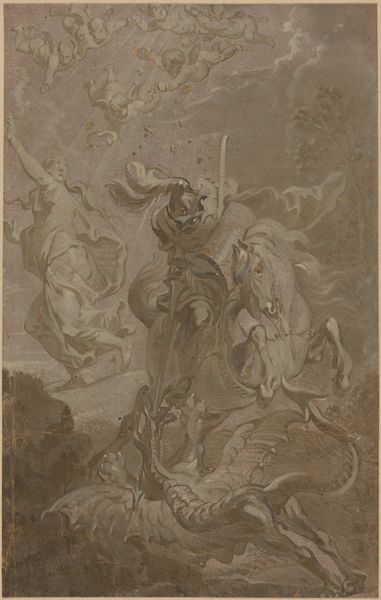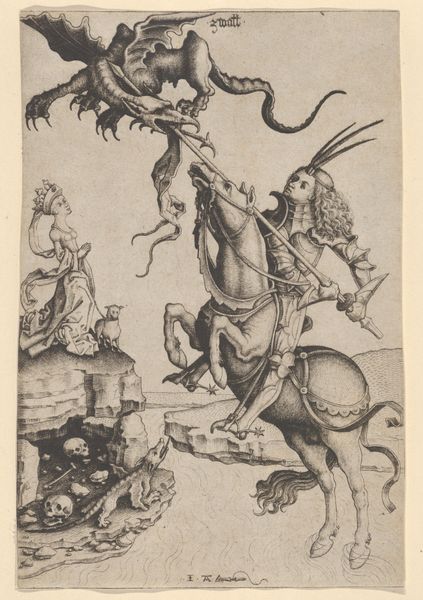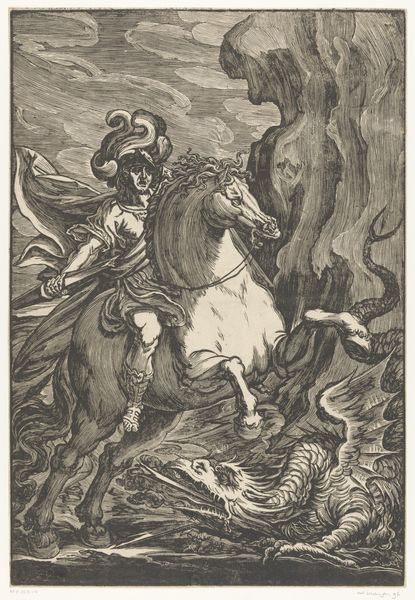
drawing, paper, ink
#
drawing
#
allegory
#
landscape
#
caricature
#
figuration
#
paper
#
ink
#
15_18th-century
#
portrait drawing
#
history-painting
#
rococo
Copyright: Public Domain
Editor: This is Noël Hallé’s “Perseus frees Andromeda,” made in 1760. It’s an ink drawing on paper, and there’s an almost caricatured quality to the figures, a roughness that's quite striking. What draws your eye when you look at this? Curator: The swiftness of the lines, wouldn’t you say? Consider the ready availability, the relative cheapness of ink and paper, tools accessible across various workshops. Hallé makes deliberate choices. Does this accessibility democratize image making in any way? Editor: It makes you wonder if it was a sketch for a larger painting perhaps? A practice piece, maybe? Curator: Precisely! Let’s examine Hallé’s labor in the context of artistic production. We know drawing was a key process for paintings, so it likely would have been part of his workflow. What does the prevalence of drawings tell us about 18th-century workshop practices and the art market? Editor: It is also interesting the way it gives such a heroic moment such a... rough presentation. What would its patrons at the time think? Curator: Think of rococo art as itself a material of courtly society, its patronage and circulation inseparable from the existing power structure. If this sketch landed in specific hands, would the 'roughness' serve to emphasize the immediacy of a powerful, controlling artistic process? Editor: That is interesting! So, even the quickness of the ink drawing reflects broader social and economic forces. Curator: Indeed! It prompts us to think about how material conditions affect artistic creation and interpretation. Editor: This gives me a lot to think about when analyzing not just this drawing, but others from the era. Thank you!
Comments
No comments
Be the first to comment and join the conversation on the ultimate creative platform.

